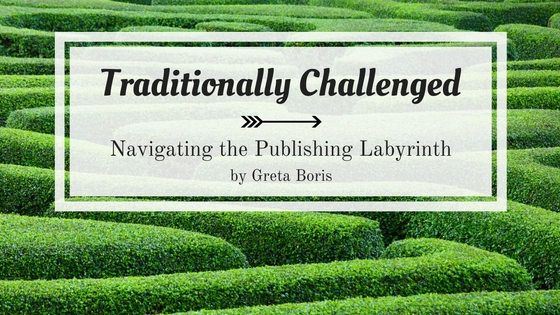What makes a villain dangerous, disturbing, and devilish?
Villains come in all forms. Some are forgettable, but some stick around to haunt our dreams. Of course, as writers, we want to write the fly-trap tape of scoundrels. The one that lures readers in and captures them forever. But how?
Last week Lisanne Harrington gave us some great advice on crafting monsters. If you didn’t read the article, go back and do it. She said, in a nutshell, monsters need to have a past that provides believable motives and explains their monstrosity. You must also avoid, or twist, the stereotypes. Everything she wrote applies to villains as well.
Since we have that great foundation laid, I thought we’d now do a bit of building.
If you were constructing a house, you’d have a lot of decisions to make. Will it be brick, wood, stucco? How large? One story or two? Most of your answers will be based on two things: location and function.
Location, location, location
I’m all about the setting. This is probably why my first novel, A Margin of Lust, revolves around a real estate agent who lists a very expensive, albeit creepy, home in Laguna Beach. I love haunted house stories. Although the house isn’t haunted in the traditional sense, I tried to evoke the mood.
Just as the shape and style of a house suggests certain kinds of décor, the location of your story sets a mood that requires a certain kind of villain. The Alien monster would be as at home in a John Grisham legal thriller as an Eskimo in the Sahara. Placing a villain in the wrong setting evokes chuckles instead of shivers. Your bad guy, or girl, can blend in, or stand out, but they have to belong.
The Invisible Villain
Some of the scariest stories revolve around an illusive evil. A classic example of this is the title character in the H.G. Wells novel, The Invisible Man. What is more terrifying than knowing danger is lurking, but not knowing where? All who-done-its depend on this structure.
If you choose the invisible villain, the character must blend into the backdrop of your story world. He or she must be so homogeneous that several characters could fit the bill. They must be a wallflower.
This was the structure I chose for A Margin of Lust. Although there are scenes from the antagonist’s point of view, and you know many things about his past, his personality, his longings and lusts, you don’t know who he is until three quarters of the way through the novel.
The Stand Out
Just as a decorator may decide to add dramatic flare to a room by throwing a flame-red pillow into an otherwise muted palette, a stand out villain is an equally viable option. Annie Wilkes, from Stephen King’s Misery, isn’t your stereotypical, subdued, stoic, New England spinster.
Danger oozes from every awkward sentence she utters. She’s wrong. All wrong. And you know it as soon as you meet her. If you had a car accident out in the middle of nowhere in a snow storm, you’d be about as happy to see Annie Wilkes as the Abominable Snowman.
What’s a Bad Guy to do?
The second thing to take into consideration when building your home is function. How many people will be living there? What are their ages? Is it a starter home, family home, a home designed to hold elegant soirees?
Similarly, your antagonist must fit your protagonist’s needs, push them to make the character arc you want them to make. Hannibal Lecter holds a strange attraction for Clarice Starling in Silence of the Lambs. He’s brilliant, charming, and as secure as she is insecure. Unfortunately, he has an eating disorder.
Clarice must resist the danger of being engulfed by the enormity of his personality in order to gain the information she needs to solve a case. Braving his presence strengthens her. That new found strength enables her to win her final battle.
In A Scent of Wrath, coming this December, one of the villains of the story forces my protagonist to face her childhood fears. In doing so, she learns a things about herself that arm her for the conflict to come.
Flip a Coin
Often a character’s Achilles heel is the opposite of their greatest strength. For example, Frodo’s ability to resist the power of the ring, in The Lord of the Rings, comes from his humility. But pride almost causes his death.
It’s the Frankenstien monster’s humanity that drives him mad.
In Breaking Bad, Walter White’s desire to provide for and protect his family eventually puts them in horrible danger.
Your villain can fit like a puzzle piece into your protagonist’s weakness. Or, he or she can act like a goad to prod them into doing the right thing.
In A Margin of Lust my protagonist, loves her family. She’s a good wife and mother. But she’s also selfish. She’s overly ambitious, and desires the attention and accolades of others. The villain is happy to hide in her shadow and use her ambition to his own end.
Nick Dunne, in Gone Girl, is a self-absorbed adulterer. His wife and antagonist, Amy, uses that weakness against him. It causes him to examine his life and become a better man.
The protagonist and antagonist perform a dance neither can perform on their own. They may draw each other like opposing magnetic charges, or repel each other like similarly charged objects. But their personalities and fates are always intertwined.
Next week, Megan Haskell, will tell us how to craft a monster-bashing, villain-slaying hero. But meanwhile, chime in. Who’s your favorite literary or movie villain? Why?
***

Greta Boris Director
Greta Boris is the author of the 2017 releases, A Margin of Lust and The Scent of Wrath, the first two books in her 7 Deadly Sins domestic suspense series.
Her work has appeared in a variety of national magazines and in Murder, Mystery & Mayhem, an anthology of short fiction. She’s also the author of the nonfiction Amazon Bestseller The Wine and Chocolate Workout – Sip, Savor, and Strengthen for a Healthier Life and Aspiring to Author – A Guide for Your Publishing Career.
You can visit her at http://gretaboris.com. She describes her work (and her life) as an O.C. housewife meets Dante’s Inferno.


Good point about “flipping the coin” – and good examples, too. I’m coming to see how my antagonist really does fit like a puzzle piece into my MC’s weakness (great way of putting that, Greta!). This article helps me see how I should play that up more.
So glad it helped, Joy!
Greta
I echo what Joy said. Using the heroes strengths to put him in danger or his weaknesses to save him is brilliant. It’s very much a dance, eh?